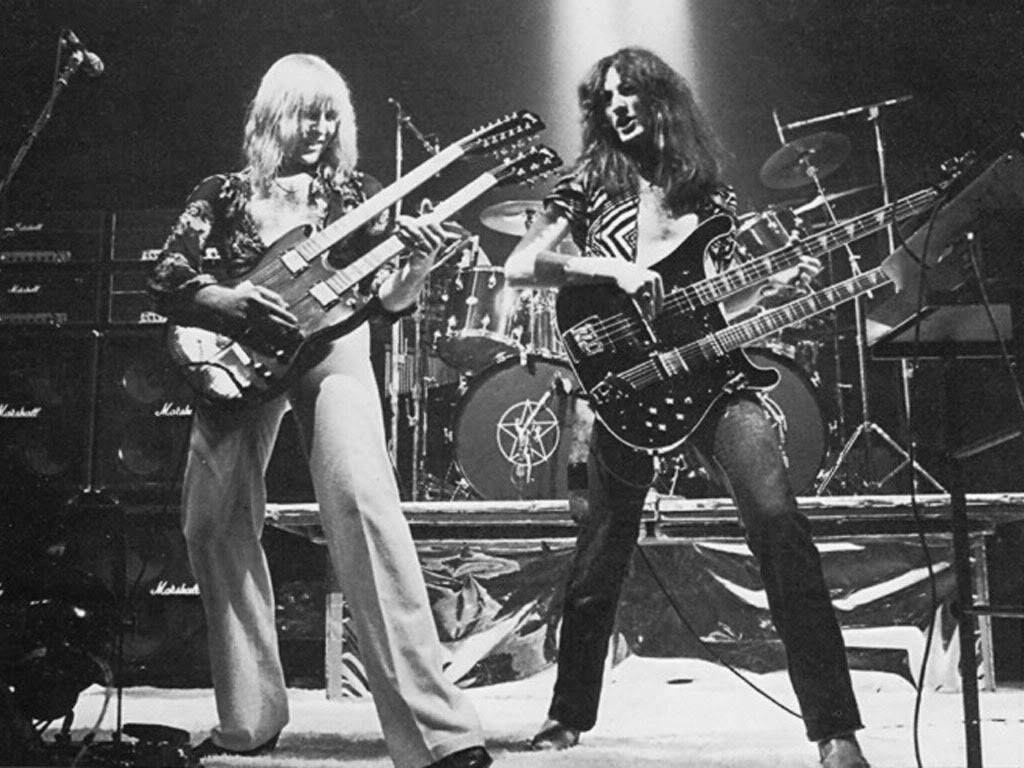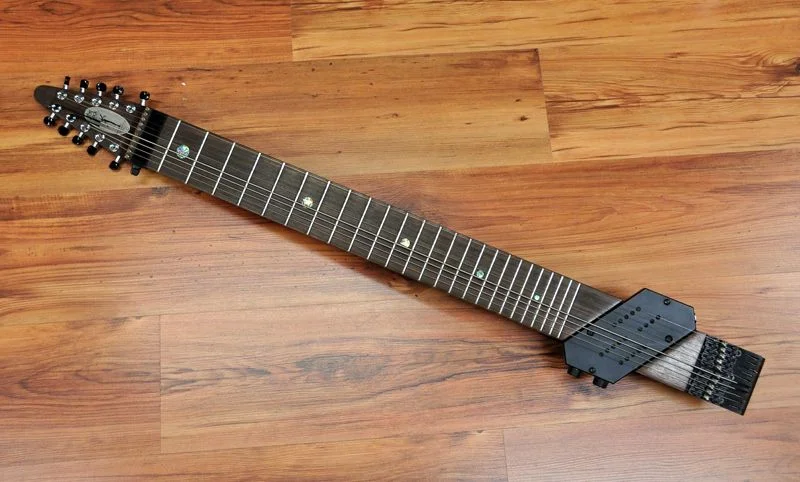We cannot answer this question exactly, because your music and your ears will determine what’s true for you. However, as an overview, here is some information about the different ways we’ve seen people amplify their tapping instruments –
TWO AMPS
Because the instrument has bass and melody outputs, some people simply use a bass amp for the bass side and a guitar amp for the melody side.
Of course two amps cost more than one amp, and you have to carry them both around, but it is a fact that bass amps are built so as to be very kind to the sound from bass strings, and guitar amps are built so as to be very kind to the sound from guitar strings. So this two-amp plan does work pretty well for getting a great sound.
Having separate signal chains means control over the sound of the two string sets individually such that the bass side can be a bass and the guitar side can shred or jazz it up or whatever.
Best if you think of the instrument like a bass and a guitar on one neck, and want a separate sound for each of them.
ONE AMP
Some players treat the instrument like it is all one animal with a wide range rather than as two separate things. Mono output and one signal chain, with one sound, and one amp. For example the bass player who plays the instrument like a 12-string extended-range bass.
If you’re selecting a single amp, the thing to beware of is this: Some bass amps will be weak in the higher registers and some guitar amps will leave of the lowest bass frequencies. However, some bass amps and guitar amps can produce excellent results. High-end bass amps will generally reach high enough into the upper frequencies for good projection on the highest Megatar strings, and are generally preferred over guitar amps.
Your ears must be your guide. And most any guitar store will let you try amps as much as you like.
ONE MULTI-CHANNEL KEYBOARD-TYPE AMP
Some players use this particular method, because it allows them to have one easy to carry amp that can handle very low and very high noted. Keyboard amps or PA-type amps are made to handle a full range of frequencies.
Some combo amps have multiple input channels. This works great for the stereo output of your Megatar, and often allows for additional instruments or a microphone as well.
As this type of amp is not optimized for the sound of a bass or a guitar, Integrating some sort of preamplification, EQ, conditioning, modeling, or effects can go a long way toward sweetening the sound.
This type of setup is great for players who use MIDI or heavy effects, taking the sound outside the normal realm of bass and guitar.
Home Stereo
With the right adapters, you can plug the instrument into the auxiliary input on your home stereo. The draw back (or is it an advantage?) with this setup is that the melody will be in one channel and the bass in the other, although this could be overcome with certain measures. If you have a good quality stereo setup this can be quite effective. It also gives you the option of using headphones to practice.
Computer or Home Studio
With commonly available adapters you can plug your Megatar into your computer, laptop or even smart phone or tablet allowing access a whole world of digital recording and effects possibilities. Plug it in, grab some high-quality headphones and you're in sonic heaven.
Also, remember that you can *start* with almost anything, because your earliest practice will be getting the feel of it. Luckily, your past training will transfer quickly, and the process is a lot of fun. And after a couple of weeks playing through *anything*, you’ll probably be in a better position to specify what you’d prefer more exactly.






